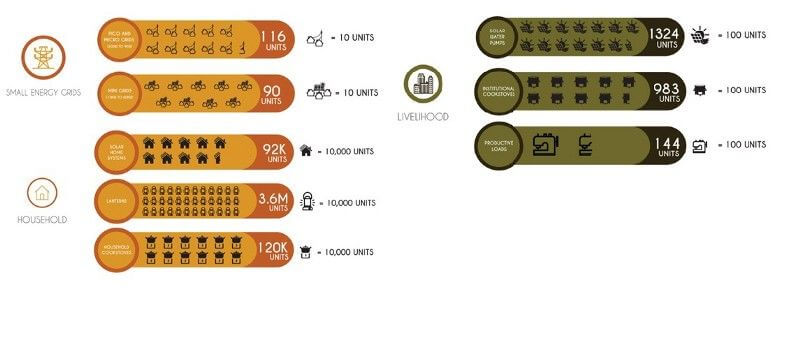A new report launched by industry representative Clean Energy Access Network (CLEAN) showed that India’s private sector energy access companies are experiencing growth, and expect to triple their financing needs in the next three years, but need stronger public partnerships to scale more rapidly.
CLEAN’s first annual “State of the Sector” report is aimed at serving as a benchmark for the sector, to track ongoing performance and identify future needs. The report covered fiscal year April 2016 to March 2017.
According to the report, electricity access market leaders deployed 206 small energy grids (including mini-grids), 92,000 solar home systems (SHS), 3.6 million solar lanterns and1,300 solar water pumps. In addition, the sector also deployed 144 productive use projects such as agricultural processing, small-scale manufacturing and cold storage.
On the clean cooking front, a total of 120,000 clean cookstoves for households were sold, while 980 were deployed for institutions.
Sector companies surveyed also said they expected their need for finance to increase three fold over the next three years to 3.8 billion INR (USD 59 million). At the same time, however, they stressed that access to affordable, long-term debt remains the biggest barrier to growth, followed by onerous collateral requirements.
As part of the effort to unlock more finance, also launched alongside the CLEAN report was a new tool to help investors and project developers to streamline data. The tool, DREEM, was developed to help standardize enterprise and project data, and allow for lower transaction costs and more efficient operations.
“The innovation and entrepreneurship of the decentralized renewable energy sector in India are a critical part in building the digitized, decentralized and democratized energy system of the 21st century that India envisions”, said report author Surabhi Rajagopal. “Private sector delivery of distributed energy access, given adequate public partnership, can help India achieve quality, reliable energy access faster, while ensuring rural economic development, energy security, and climate resilience.”
“There needs to be a more level playing field,” she added.
Added Krishan Dhawan, CEO of the Shakti Sustainable Energy Foundation: “Decentralized energy is not a standalone solution, but an integral part of supply solution and should be considered a complement not a supplement.”
The Government of India has made universal 24x7 energy access a priority, yet at current rates achieving that goal will take considerably longer than December 2018, the target for universal household electrification set out by the recently announced “Saubhagya” scheme. And in the case of clean cooking, the goal is 2019 for reaching 50 million new LPG connections, but long-term affordability and diverse regional cooking needs will require multiple solutions.
According to some estimates, the energy access opportunity in India will be $48 billion a year by 2030.
“The cost of solar is falling at a rate where it will turn into a cost-saving proposition vs. the grid for many customers,” said Piyush Mathur, CEO of Simpa Networks and CLEAN member. “At that point, customers will start to make an affirmative choice to go solar, and use the grid as back-up.”
CLEAN is comprised of 104 members, 69 of which are last-mile energy delivery micro-, small- and medium-sized enterprises (MSMEs).
